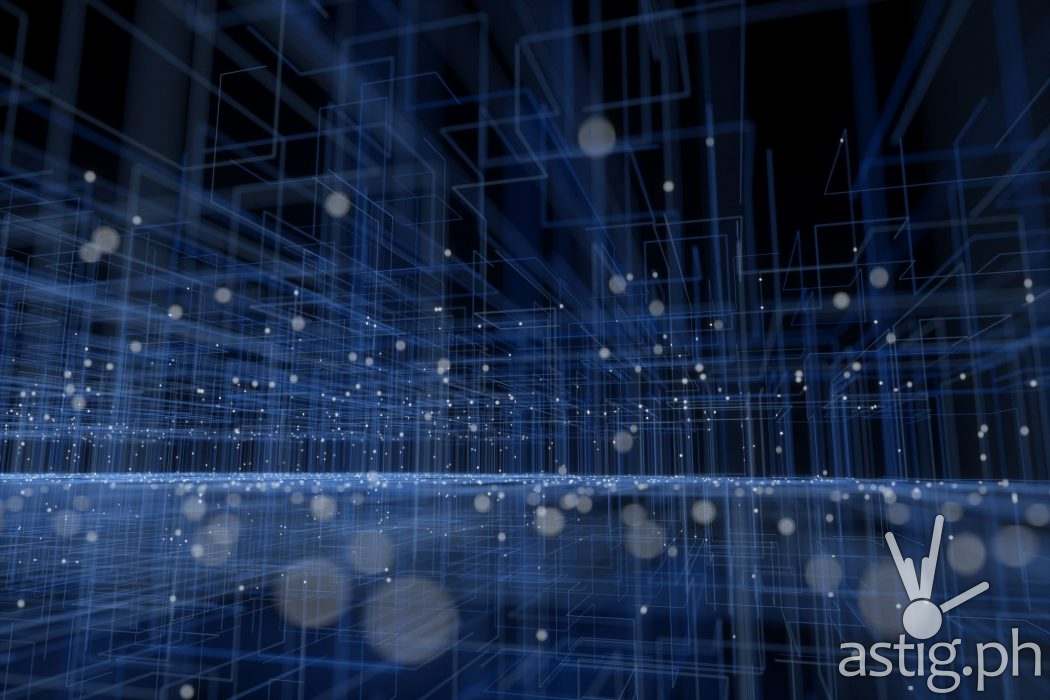MANILA, Philippines – There will come a time when the web becomes decentralized as the internet is slowly shifting towards Web 3.0. When this happens, it will be difficult for data to be misused as internet users will have more control of the data that they share online. Web 3.0 creates new opportunities for users through the emergence of digital platforms where they may interact with one another on a shared and decentralized space.
The Metaverse serves as a manifestation of these virtual community platforms on the Internet. It provides a shared environment and economy where people can interact virtually and share knowledge with one another. However, certain issues have been posed surrounding the adoption of the Metaverse. The Metaverse will require tremendous support from data centers before a truly immersive experience can be created on the web. For users to enjoy a shared digital reality, a combination of existing and emerging technologies will need to be integrated onto the platform. Existing data centers are unable to deliver the quality of experience that the Metaverse appears to promise its users on Web 3.0.
Data centers require extensive computing power to sustain the Metaverse. Moreover, engineers, designers and administrators play a crucial role in ensuring that the platform runs efficiently. Significant manpower and electricity usage will be required to sustain the Metaverse as more users continue to incorporate the platform into their daily lives. Currently, the world’s data centers already represent 1% of the world’s electricity usage. In the Philippines, the interest and investment in data centers is rapidly increasing, with the country expected to be one of the biggest data centers in Asia. According to a report by Arizton Advisory & Intelligence, the Philippine data center market was valued at $298 million in 2021, and is anticipated to reach $635 million by 2027.
While the demand for cutting-edge data centers increases, business leaders need to explore energy-efficient technologies to support the infrastructures that hold the Metaverse together. Schneider Electric underscores how companies are challenged with ensuring sustainability in their business operations while meeting the demand for data centers in the future. To address these challenges, the global specialist in energy management and automation highlights several key offers that can help balance current market demands.
“Schneider Electric offers a range of products that supplement the growing interest in the Metaverse. As a leader in sustainable innovations, Schneider Electric has developed micro data centers that offer a more cost-effective way of building and deploying IT solutions at network edge,” said Abraham Lim, Secure Power Director at Schneider Electric Philippines. “Edge computing will power the Metaverse and keep the platform running for users in these virtual spaces by increasing efficiencies across the network.”

Generating mountains of data would allow manufacturers to adjust their processes and make operational decisions at all stages of manufacturing process. Aside from giving manufacturers visibility from production to decommissioning, industrial edge computing in would also provide drivers with real-time data that will make it possible for them to reduce travel time and conserve energy. Safety concerns and regulatory issues surrounding smart vehicles may be addressed with edge computing and data from the Internet of Vehicles (IoV).
Schneider Electric also offers modular data centers which gives companies the ability to scale capacity quickly by using non-traditional builds and lessening deployment of centers drastically as compared to existing data centers. Enhanced modular data centers help businesses achieve architectural efficiency due to the flexibility in design for these centers. Apart from data centers, Schneider Electric offers EcoStruxure IT as a cloud-based solution for end-to-end management and monitoring of network edge sites. The software contains algorithms and expertise in IT infrastructure which provide users and partners with the right visibility and on-site as it is needed. This software includes up to 25% of lifetime extension, which would ultimately reduce any business’s carbon footprint.
Earlier this year, the Department of Trade and Industry (DTI) released a report stating that the investment in hyperscale data centers would bring the Philippines closer towards securing its digital infrastructure. Moreover, the renewable energy generation projects should attract foreign investors to participate in building our country’s digital infrastructure.
In a report by IRENA Coalition for Action, the Philippines has yet to reach its target of eliminating greenhouse gas emissions by 75% in 2040, while the neighboring ASEAN countries have targeted zero-net emissions for the following decade. Almost eliminating greenhouse gas emissions completely requires a forward-looking approach to powering data infrastructure in the country as it will consume a lot of electricity. Increasing the share of renewable energy into the grid mix, supported by the appropriate systems, could help the Philippines move forward towards digital transformation and push them to keep up with the pace of its neighboring countries towards achieving zero-net emissions. These initiatives could pave the way for the investment in other clean energy sources as well as the development of the country’s technological capacities in preparation for the age of the Metaverse.
“With Web 3.0 approaching, metaverse players and business investors need to figure out how to operate sustainability in the Philippines. Evidently, people tend to underestimate the effects of Web 3.0 in the long-term,” said Lim. “The technologies and data centers needed to power these virtual spaces pose environmental issues that need to be addressed as early as now. Schneider Electric’s new innovations may help these businesses grow and adapt as the country’s landscape changes with the evolution of these web technologies.”

